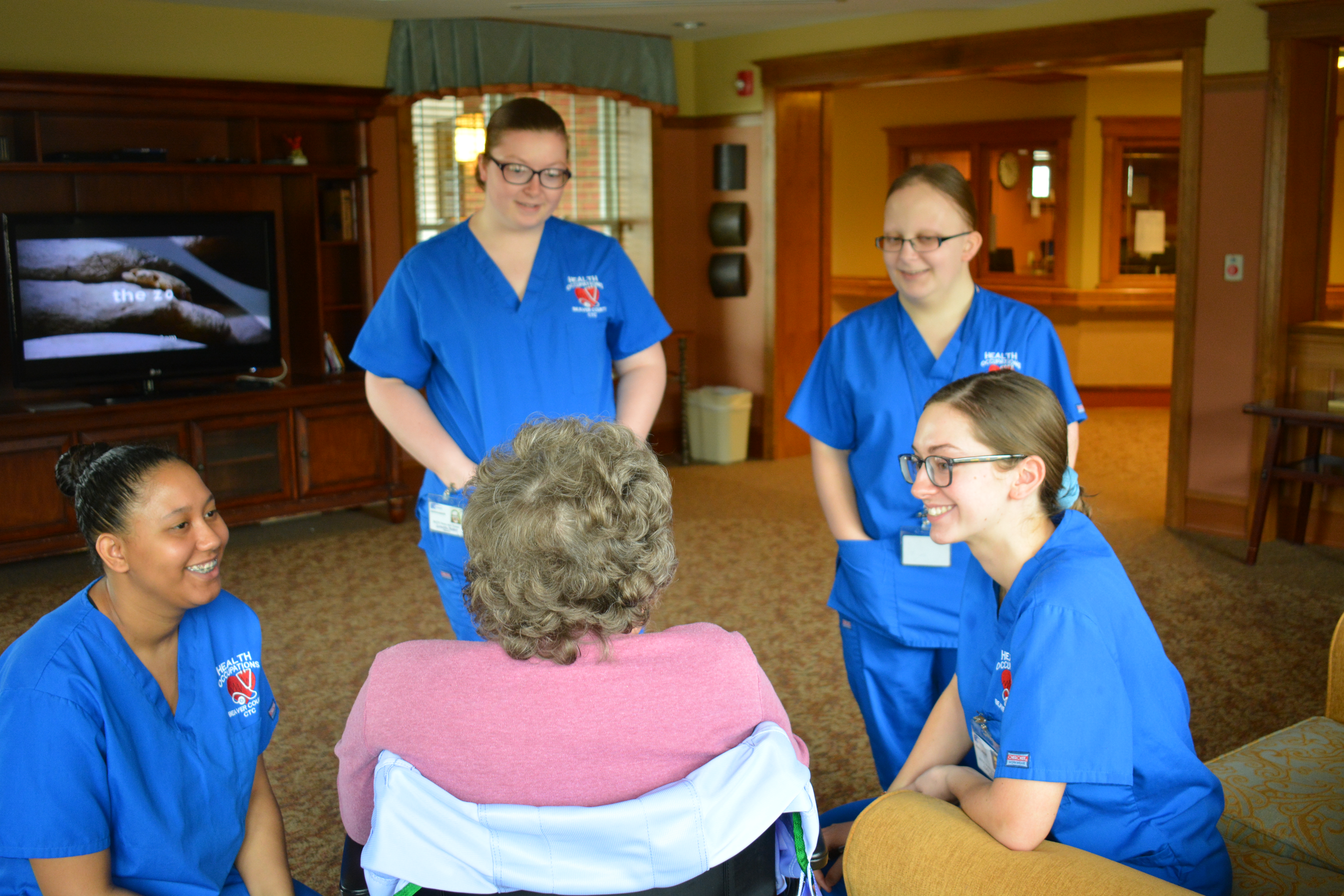
Educators, in all fields of education, support their students in a variety of ways in order to allow their students’ career goals to come to fruition. One type of supporting educational system that prepares students for individually-focused career paths is Career and Technical Education (CTE).
CTE is a method to earn some sort of certification/diploma, as well as a way to prepare students to take the next step in their professional lives, whether that be obtaining their first professional position or furthering their education.
What is Career and Technical Education (CTE)? See our blog post: Understanding Career Technical Education
An Overview of Health Science CTE
Health Science is one of the many Career Clusters within the realm of career and technical education. Health science education provides students with a background and basic education of the health field so that they are better equipped with critical knowledge when it comes to choosing a specific industry within the healthcare field. Certifications for some careers can be obtained through a CTE program, while others require further education after completion of a health science CTE program. With the dynamicity of health science education, students can begin their careers in diverse settings such as hospitals, laboratories, government agencies, health clinics, schools, nursing homes, public health administration, and non-profit groups, only to name a few. 1
Of all 16 classified career clusters, health science appears to be one of the most popular career clusters among students. According to Applied Educational Systems, “36 percent of all CTE students in 2012 pursued a career in the health science career cluster.” Applied Educational Systems states that “from 2002 to 2012, health science certificates and associate degrees grew 137 percent.”2 Students in health science clusters were also found to be more likely to continue on in that career direction. According to the National Assessment of Career and Technical Education, “continuation in the same CTE field at the post-secondary level was most common among high school graduates who concentrated in health science.”3
According to Pearson, “The number of those employed in professional and technical health care occupations, which includes nurses, pharmacy technicians, and medical technologists, will grow by 31 percent by 2020.”4 Narrowing down the healthcare field, “nursing, phlebotomy, medical assisting, rehabilitation, office management, and other skills are in demand more than most others, especially home health care and nursing.”3. According to Applied Educational Systems, “From 2012 to 2022, the five fastest-growing jobs in health science are registered nurses, nursing assistants, home health aides, licensed practical nurses, and medical assistants.” With the numbers of available healthcare careers continually rising, it is important that there are enough students coming out of school with certificates/degrees to fulfill those much-needed positions.

Role of Simulation in CTE Education
CTE programs have begun to introduce simulation-based learning to their students. According to the U.S. Department of Education, “sites report that the experiential learning opportunities are attracting more students to enroll in CTE courses.”5 By offering simulation, students are being exposed to realistic situations. As stated by Advance CTE, “simulated work-based learning replicates workplace experiences by allowing students to immerse themselves in a realistic worksite activity without leaving campus.”6 This becomes especially important whenever there are few local workplaces or, in the health field, where there may be limited availability of clinical field placements.5 Simulation may also provide opportunities in health care where students may not be exposed to certain things because of liability issues.
American Institutes for Research conducted a national survey through the Association of Career and Technical Education that allowed them to reach out to CTE educators to better understand professional development needs. One of the top-priority needs that was identified by CTE educators was “designing authentic or simulated learning experiences, requiring real-world use of industry-specific technologies.”7 When asked about simulation instruction, educators shared that it “familiarizes students with processes or situations they are likely to encounter on the job, builds their confidence, and better prepares them for the transition to work.” With health care being such a hazardous and high-stakes field, simulation provides students the luxury of learning from their mistakes without the consequences of harming an actual patient.5
When it comes to careers in the healthcare field, an excellent education ultimately translates to patient safety and quality care; real results seen with real patients. Education is always important, but this end goal means that the education of our nation’s future healthcare providers is of the utmost concern. Students who choose to begin their health career with Career Technical Education in the health science or health careers cluster can gain a few extra years of experience and training before beginning their careers; and the instructors that inspire and educate these students have the critical role of improving the future of patient care.
Bailey Salvati is Sales Account Representative for Pocket Nurse. She can be reached at bsalvati@pocketnurse.com.
The featured image is courtesy of Beaver County CTC. Students in the "Nurse Aide Training" course do clinical nurse aide rotations as part of a program that integrates the students and the greater community.
Sources:
- All Allied Health Schools, “All About Health Science: Majors, Degrees, and Careers.” https://www.allalliedhealthschools.com/health-science/
- Applied Educational Systems, “78 Career and Technical Education Facts for 2019.” https://www.aeseducation.com/career-technical-education-facts-that-prove-its-awesome
- U.S. Department of Education, “National Assessment of Career and Technical Education,” Final Report to Congress, 2014. https://www2.ed.gov/rschstat/eval/sectech/nacte/career-technical-education/final-report.pdf
- Wilson, LeAnn. “World of Opportunity in career and technical education: Healthcare,” Pearson Ed. https://www.pearsoned.com/career-technical-education-healthcare/
- U.S. Department of Education, “Simulated Work-Based Learning: Instructional Approaches and Noteworthy Practice.” August 2017. https://www.gfcmsu.edu/revup/documents/SWBL_Report.pdf
- Advance CTE, “Simulated Work-based Learning: Instructional approaches and Noteworthy Practices.” https://careertech.org/resource/simulated-work-based-learning
- Moore, C.G., Green, C., and Clark, K. “What Career and Technical Education Teachers Really Want for Professional Learning.” American Institutes for Research, September 2015. https://www.air.org/resource/what-career-and-technical-education-teachers-really-want-professional-learning








